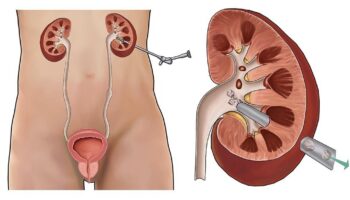If you have sciatica, you may experience a sharp pain down your legs from your lower back. Slight movements such as bending may trigger and worsen the pain. This might be an indication of a severe medical condition such as spinal stenosis. Examination and diagnosis from a Mason sciatica specialist may help focus treatment on addressing the source of the problem.
What is sciatic pain?
Sciatica is a term that refers to nerve pain originating in the lower back that travels down to the leg through the hip and buttocks.
Various symptoms characterize sciatica, including:
- Pain. Sciatica pain may feel like inflammation or a burning sensation from your lower back to the front or back of your thigh.
- Movement-induced symptoms. Specific postures may worsen the pain. For example, bending, lying down, sitting, and getting up.
- Numbness. You may experience numbness and tingling at the back of your leg. Sciatica affects one side of your body and may cause heaviness in the affected leg.
Medical attention is vital, especially when you develop sciatica after an accident. Other symptoms may indicate an underlying medical condition, a spinal tumor, equine cauda syndrome, or an infection. Examples of the symptoms include:
- Sexual dysfunction
- Difficulty controlling your bowel or bladder
- Constant neurological symptoms like feeling weak in the leg
- Experiencing symptoms in both legs
Causes of sciatic pain
Lumbar herniated disc. This is the most common cause of sciatic pain whereby a herniated disc compresses a spinal nerve root and may occur in two ways:
- Direct compression. This may occur when a lumbar disc develops a bulge or through leakage of the disc’s inner contents.
- Chemical inflammation. Acidic fluid from the disc may leak and result in inflammation or irritation in the surrounding area.
Spondylolisthesis. Physical stress may cause a vertebra to slip over another. The displaced or collapsed vertebra may compress the nerve and result in sciatica.
Lumbar spinal stenosis. This condition mainly occurs in people over the age of 60. Spinal stenosis is the constricting of the spinal canal. Narrowing of the passage may compress the nerve roots causing sciatic pain.
Degeneration. Degeneration of intervertebral discs may cause the inflammatory protein to leak and irritate the nerve roots. Abnormal tissues in the lumbar spine may compress nerve roots of the sciatic nerve.
Treatment for sciatic pain
It is essential to treat sciatic pain as early as possible to help manage the progression of symptoms. Your doctor may recommend either a surgical or non-surgical treatment method based on diagnostic results. Examples of non-surgical treatment options include:
Medications such as:
- Opioid analgesics. Your doctor may suggest that you use these drugs for a short duration to avoid addiction.
- Oral steroids
- Non-steroidal anti-inflammatory drugs such as ibuprofen
- Anticonvulsant such as gabapentin
- Tricyclic antidepressants
Epidural steroid injections
Steroid injections help reduce inflammation around the sciatic nerve and reduce the production of inflammatory cells in your body.
The selective nerve root block
Your doctor will administer this near the spinal nerve to reduce inflammation and pain transmitted by the nerve.
If you do not experience relief from pain after six to eight weeks, reserve a session with your specialist at Elite Physical Medicine to discuss the available treatment options.





